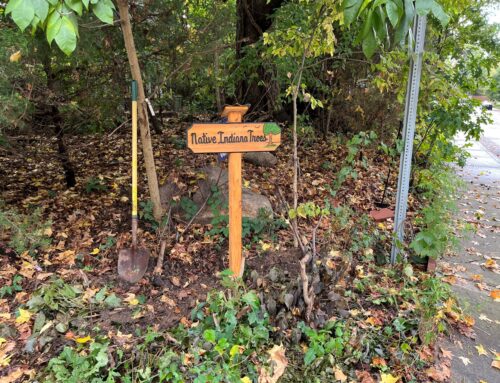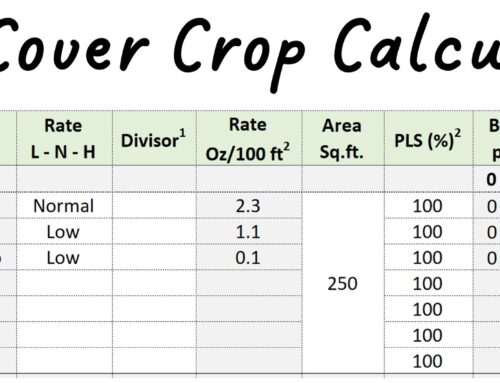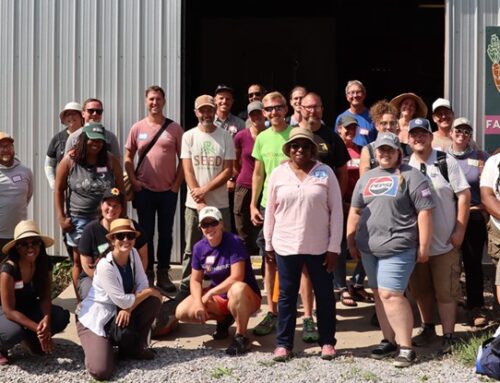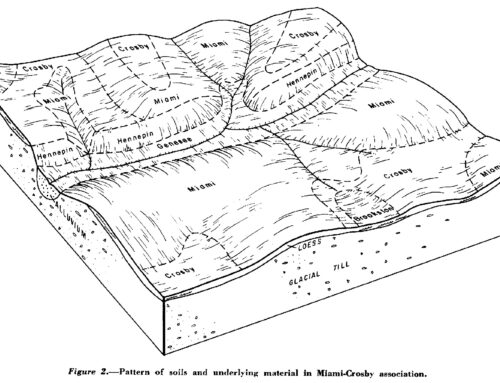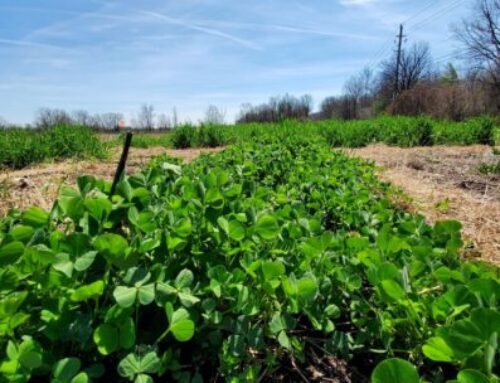Whether you farm 10,000 acres or a 10 x 10 garden plot in your backyard, you can improve your soil’s health. Soil health is the capacity of a soil to function as a vital, living ecosystem that sustains plants, animals, and humans.
There are four basic principles that improve the health of the soil. These principles will work on any soil, most anywhere and when used together as a system build organic matter and biodiversity in the soil.
- Keep your soil covered
- Reduce soil disturbance
- Keep living roots growing as long as possible
- Plant a diversity of plants
Large farmers, special crop producers and backyard gardeners in and around Marion County have had success in starting their soil health journey by adopting these principles.
For many decades, conservation-minded farmers have used a variety of methods to reduce soil erosion by keeping their soil covered at all time, such as leaving crop residue over the winter, no-tilling or strip tilling, and planting cover crops. Cover crops are grasses, legumes and other species that are planted either after harvest or in the spring for the purpose of providing ground cover and keeping a living root growing as long as possible.
Over the past 10 years, there has been a resurgence among large scale farmers in planting cover crops as part of their farming operation because of their many valuable characteristics in addition to erosion control. Cover crop roots grow deep creating pockets in the soil where air and water can flow. They hold soil in place through heavy fall and spring rains, add organic matter to feel the soil’s biodiversity and aid suppressing weeds and fixing nitrogen. For the same reasons, small farmers have discovered that adding cover crops works well in their operations.
Most vegetable crops will not leave an adequate amount of residue over the winter to provide the soil cover needed and often additional mulch such as alfalfa, straw, wood chips, etc. will help supplement the ground cover to control erosion and suppress weed growth.
Reducing soil disturbance in type of crop production can be challenging and requires patience and planning. Changes may be needed in machinery and hand tools, not to mention thought processes. Traditionally, our fathers and their fathers plowed or rototilled to prepare seedbeds in the spring and control weeds throughout the growing season. Many large scale farmers reduce soil disturbance by strip tilling or no-tilling, where seed is drilled into the covered soil rather than opening a wide furrow. Small farmers can use similar procedures, such as using a pointed hoe to open a narrow strip in the soil. For weed suppression, try using barriers such as plastic, cardboard, newsprint in conjunction with your mulch. These barriers will also keep the soil cool and help retain moisture.
Regardless of the size of your farm (or garden), plant diversity is important in improving the health of the soil. Bio diversity breaks up disease cycles and controls pests naturally. Large-scale farmers accomplish this by alternating their plantings of corn and soybeans. Similarly, vegetable growers can rotate varieties of vegetables in different areas of the field each year.
There is much to learn about soil health and how these four principles are used together as part of a soil health management system to sustain and improve your land. Visit the soil health initiative tab on our website for more detailed technical information about these principles.


